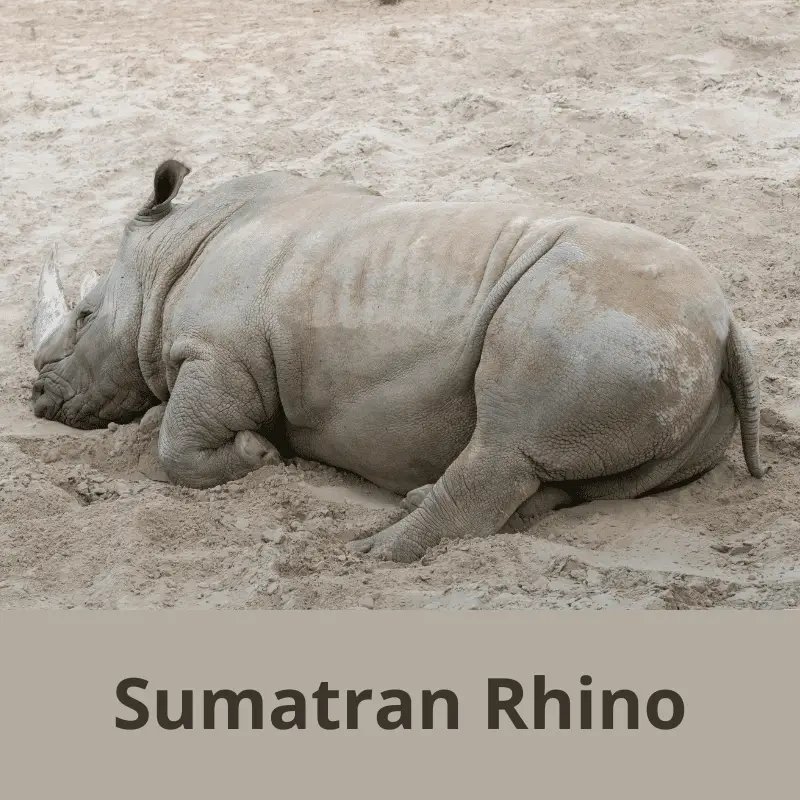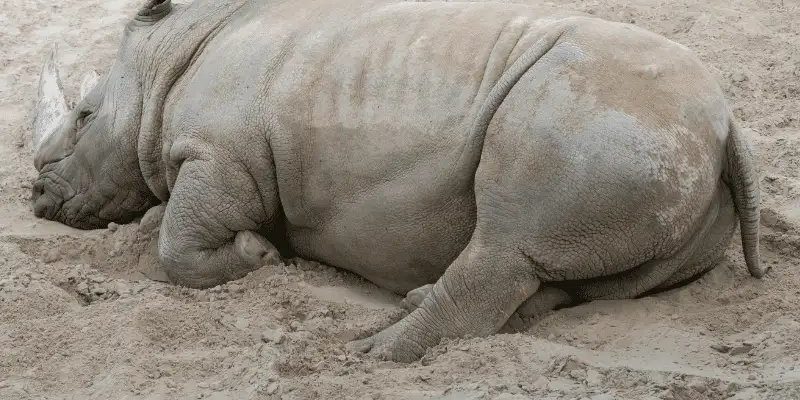
The Sumatran rhinoceros is primarily found on the islands of Sumatra and Borneo in Southeast Asia. Unlike its larger relatives, which can be more aggressive, the Sumatran rhino tends to lead a quieter, more elusive life. This elusive nature means that studying its eating habits and strategies for finding food can be quite a challenge. So, how does this fascinating animal find enough nourishment in its environment, and what does it eat? Let’s dive into its diet and hunting strategies to uncover the secrets of this remarkable creature.
Dietary Preferences of the Sumatran Rhinoceros
The Sumatran rhinoceros has a varied diet that reflects its habitat. These rhinos are browsers, meaning they prefer to eat leaves, stems, fruits, and flowers from shrubs and small trees. Imagine a buffet of greenery that this rhino can nibble on throughout the day; that’s how their diet works. With a keen sense of smell, they can detect edible plants even amidst the thick underbrush of the rainforest.
So what do they eat specifically? Here are some of their favorites:
- Fruits: Rhinos enjoy a variety of fruits, which provide essential vitamins.
- Leaves and Shoots: They selectively munch on young leaves and tender shoots from shrubs.
- Flowers: Seasonal flowers also find their way into the rhino’s tummy.
One interesting aspect of the Sumatran rhino’s diet is its reliance on specific plants. These animals often have preferred species they seek out. It’s as if they have personal favorites, just like we do! This preference is important because it influences the biodiversity of their habitat. Their grazing habits can help shape the forest ecosystem, making the Sumatran rhino not just a consumer but also a contributor to its environment.
Foraging Techniques and Behavior
When it comes to finding food, the Sumatran rhinoceros employs a range of foraging techniques. These creatures tend to be solitary, which can make their foraging strategies quite unique compared to more social animals. They rely on a combination of keen senses—especially smell and hearing—to locate food sources.
Being mainly nocturnal, Sumatran rhinos prefer to forage during the cooler hours of the night. Picture them quietly shuffling through the underbrush, using their strong sense of smell to sniff out tasty treats. They also have a knack for using their strong lips to grasp branches and pull down leafy plants. Honestly, it’s fascinating to think about how they navigate through dense foliage, taking care to avoid predators while searching for their next meal.
One of the more fascinating hunting strategies involves their ability to travel long distances in search of food. While their home range can vary, studies suggest that a single rhino may cover several kilometers in a night, seeking out the best feeding grounds. They seem to follow seasonal changes and food availability, adjusting their foraging behavior accordingly. This adaptability is crucial for survival, especially in an ecosystem that is constantly changing.
Role of Habitat in Diet
The Sumatran rhinoceros is deeply connected to its natural habitat. They primarily thrive in tropical rainforests, which offer a rich tapestry of flora to feast upon. Their presence in these forests can be quite beneficial, too. As they selectively feed on certain types of vegetation, they help prevent any single species from becoming too dominant, maintaining a healthy balance in the ecosystem.
You might be wondering how habitat destruction affects these rhinos. Unfortunately, with deforestation and habitat loss, the availability of their favorite plants is decreasing. This makes it even more challenging for them to find food, which is distressing considering they’re already critically endangered. Their diet is so closely tied to their habitat that any changes can have immediate effects on their well-being.
Furthermore, the limited distribution of the Sumatran rhinoceros also plays a role in their diet. Since they are found only in specific areas, their food sources can become scarce, leading to increased competition for resources. Conservation efforts are crucial in preserving their habitats, ensuring that they continue to have access to the right kinds of food for survival.
Social Structure and Foraging
While Sumatran rhinoceroses are generally solitary, they are not entirely anti-social. Occasionally, you might find them sharing a meal or interacting during their nighttime foraging. This temporary companionship can occur when food sources are abundant. Imagine two rhinos meeting at a particularly fruitful tree, sharing snacks like old friends—this is an essential part of their social structure.
Their social interactions may also include communication through vocalizations, body language, and scent marking. This is how they establish territories and find mates. Such communication is especially important when it comes to foraging. By marking their territory, they can signal to other rhinos about food availability and reduce conflicts over resources.
Interestingly, younger rhinos sometimes learn foraging techniques from older, more experienced adults. This knowledge transfer is vital for the survival of the species, as it ensures that young rhinos are equipped to find food effectively. You could compare it to learning cooking from a family member; the skills you pick up can be crucial in preparing for life on your own.
Challenges in Finding Food
Despite their adaptability, Sumatran rhinoceroses face numerous challenges when it comes to finding food. One of the biggest issues is habitat loss. As deforestation continues, the lush jungles that once provided ample food are shrinking. This leads to increased competition and forces these rhinos to travel further for sustenance.
Another challenge comes from the *climate crisis*. Changes in rainfall patterns and temperature can affect the availability of food. If a drought occurs, for instance, it can lead to a decline in plant growth. Without their preferred food sources, Sumatran rhinos may struggle to find enough to eat. It’s a delicate balance, and when one factor shifts, the effects can ripple through the entire ecosystem.
Additionally, their foraging can sometimes put them at risk. As they navigate through dense forests and travel over long distances, they are vulnerable to poaching. The illegal wildlife trade targets these creatures for their horns, which further complicates their survival. Protecting these rhinos involves addressing not just their diet but also the external threats they face.
Conservation Efforts and Sustainable Practices
With the Sumatran rhinoceros on the brink of extinction, conservation efforts have become more critical than ever. Organizations around the world are working tirelessly to protect their habitats and ensure sustainable practices. You might be surprised to learn that some conservation groups focus on restoring the rhino’s natural habitat by reforesting areas that have been cleared for agriculture.
These efforts aim to create safe passages and corridors that allow rhinos to travel between feeding grounds without facing dangers. They also work on educating local communities about the importance of protecting these incredible creatures. By promoting awareness and sustainable farming practices, they help secure a future where both humans and wildlife can thrive together.
Moreover, breeding programs are another vital piece of the puzzle. In some countries, conservationists are working to breed Sumatran rhinos in captivity and then release them into the wild. These initiatives are designed to boost their population and enhance genetic diversity. It’s a challenging process, but the dedication and commitment of many organizations give hope to the survival of this majestic species.
In conclusion, the diet and hunting strategies of the Sumatran rhinoceros are not just about what they eat; they’re about how they navigate a world filled with challenges. From their unique foraging techniques to the vital role of their habitats, understanding these aspects can lead us toward better conservation strategies. With ongoing efforts to protect and restore their environments, there is still hope for the future of this incredible creature. As we learn more about the Sumatran rhinoceros, we can appreciate the complexity of their lives and the necessity of ensuring they remain a part of our world.

